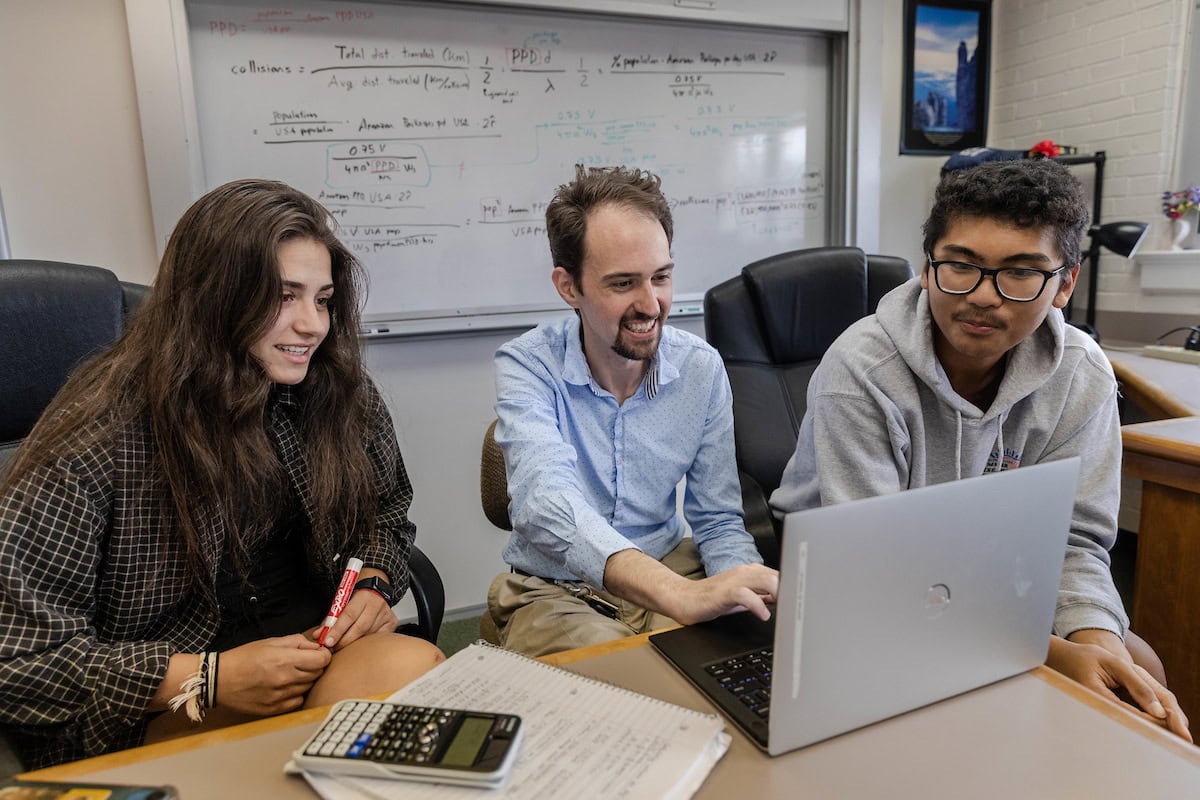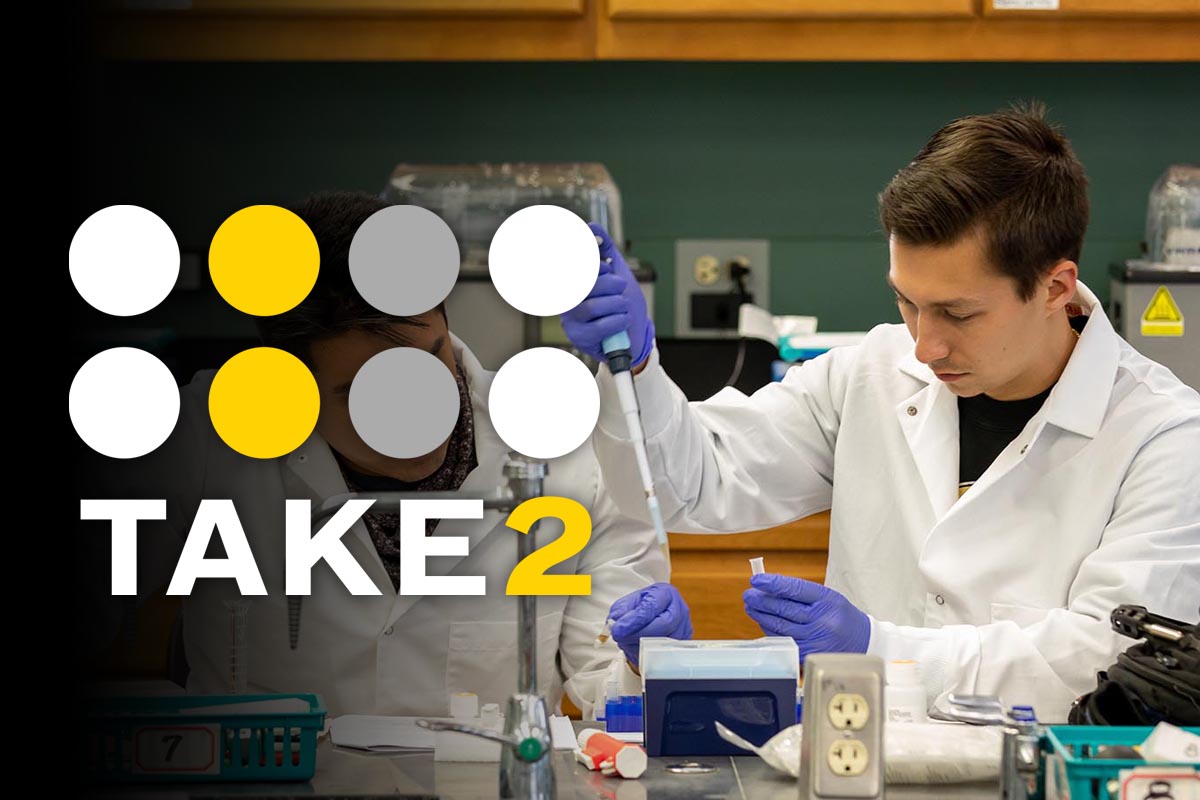Students studying drone-based delivery systems for summer research project
This story is part of an ongoing series featuring the work of faculty and students participating in Randolph’s Summer Research Program.

Marcela Izquierdo Poza ’24, professor Jesse Kern, and Angelo De Asis ’26 are studying drone-based delivery systems this summer.
Drone-based delivery systems are likely the future, offering a cheaper and faster alternative to ground-based delivery for corporations like Amazon and FedEx.
But if there are hundreds, maybe even thousands, of drones traveling the skies, the chance of collisions will also rise.
This summer, chemistry professor Jesse Kern, Marcela Izquierdo Poza ’24, and Angelo De Asis ’26 will use simulation models to see what would happen if a drone delivery system existed in Lynchburg.
“We are trying to model, or predict, collision rates,” Kern explained, “looking at the amount of damage that would be sustained by releasing a lot of drones into the atmosphere. This sort of information would go into, perhaps, discussions of policies around drone traffic in the future.”
The idea grew out of conversations Kern had with students from various departments around campus.
“I was talking with a physics and math student, and I’m a chemist,” he said. “What I was able to add to that conversation is that there are actually theories that treat gas molecules as bodies that are flying through the air and colliding with one another. So we could, in theory, apply the kinetic theory of gases to drones.”
The theoretical model relates the macroscopic behavior of gas particles—average velocity or collision rates, for instance—to the particle’s microscopic details, like diameter and mass.
A recent paper applied the theory to hypothetical drone traffic above New York City and predicted there would be up to 170,000 collisions a day by 2026.
Kern’s research project uses both mathematical and computational modeling to apply the theory to Lynchburg, where a smaller population density would mean fewer deliveries and, thus, fewer collisions.
In their simulations, Lynchburg has a fictional distribution center that regularly sends out drones.
“We’re actually tracking the position of all of these drones leaving our hypothetical distribution center, and we’ll see if they ever get close enough for a collision to happen,” Kern said.
Izquierdo Poza, a physics and math double major who plans to pursue a Ph.D. in physics, is doing the equations by hand—old-school pen-and-paper math.
“I’ve looked at the equation for the kinetic theory of gases and the equation they used in the New York paper, using Lynchburg’s data to calculate how many collisions there would be a day,” she explained while paging through her notebook. “Now I’m working on how many collisions there would be in 2028 and how it would change with the population.”
De Asis, who is majoring in computer science and math, coded a program that spawns drones from the fictional distribution center. He’s working on simulating a full year of data that will track their positions and detect when they will collide, not just in Lynchburg, but in other cities as well.
“We can take a file that has all these components that can be tweaked to match a different city and calculate the number of collisions per year,” said De Asis, who’d eventually like to work in artificial intelligence.
“It seemed very interesting because I’ve always been into programming but I haven’t done anything on a larger scale,” he said. “This is a really good project to practice so I can prepare for jobs in the future.”
Tags: chemistry, computer science and math, mathematics, summer research 2023, Summer Research Program
